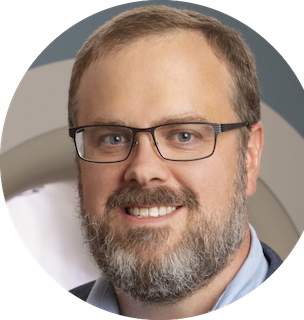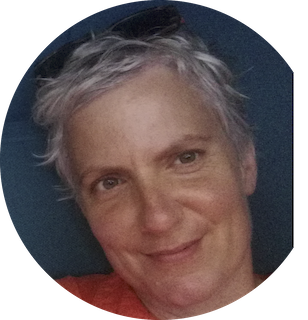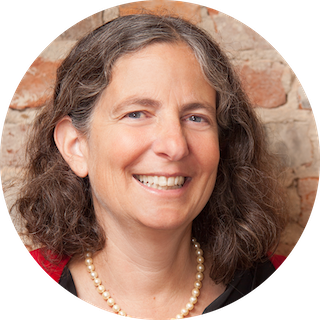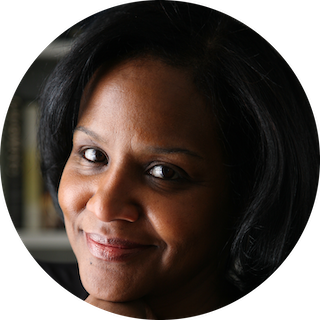Invited Speakers
 |
Monday 12/14 10:00 am EST (UTC-5) Click here for the recorded talk. Visualizing 3D Motions During Speech Using Fast Dynamic Magnetic Resonance Imaging Recent developments in magnetic resonance imaging (MRI) acquisition and reconstruction techniques have enabled high frame rate, 3D visualizations of the dynamic motions associated with speech. Frame rates up to 100+ frames per second are possible for imaging the 3D vocal tract and applications areas are growing related to pathology (such as cleft palate) and scientific applications (such as the study of languages). In this talk, I will describe our dynamic imaging approach which is based on a low rank model that enables very high spatiotemporal resolution and integration with a spatiotemporal atlas to enable interpretation of the large data resulting from a single speech scan. Additionally, I will show extensions that enable simultaneous functional brain imaging coincident with imaging the dynamic muscle movements. Professor, Bioengineering DepartmentBiomedical Imaging Center, Beckman Institute for Advanced Science and Technology University of Illinois at Urbana-Champaign |
 |
Monday 12/14 2:00 pm EST (UTC-5) Click here for the recorded talk. Cortical control of speech Production of speech requires precise control of multiple vocal tract articulators on rapid timescales. Our understanding of how human sensorimotor cortex produces speech has greatly advanced over the past decade through the use of electrocorticography (ECoG) during speech tasks. Here, I will present results on the cortical organization and dynamics of speech motor control during the production of consonant-vowel syllables. Computational Biology Staff Scientist, LBNLAssistant Adjunct Professor, Helen Wills Neuroscience Institute & Redwood Center for Theoretical Neuroscience, UC Berkeley Kavli Institute for Fundamental Neuroscience, UC San Francisco |
 |
Tuesday 12/15 8:30 am EST (UTC-5) Click here for the recorded talk. Multi-Dimensional Account of Changes in Speech Throughout Adulthood A better understanding of the evolution of speech throughout adulthood is critical for our general understanding of the complexity of speech production since age-related changes can originate from various sources (physiological, cognitive, social…). It is also crucial for clinical research where data have to be age-standardized, but also for any research on speech for which factors of variability across talkers have to be assessed. In this talk I will discuss how looking at age over the whole adulthood, with a large and varied set of speech descriptors, and with age taken as a continuous factor contribute to a better understanding of changes in adult speech across time. Results are based on a database of 500 French speakers aged 20 to 93 recorded on various speech tasks. Some speech aspects are found to evolve more gradually than others, to be better predictor of a speaker’s age than others, and to contribute to differences between chronological age and perceived age. Laboratoire de Phonétique et PhonologieCNRS / Université Sorbonne-Nouvelle |
 |
Tuesday 12/15 11:00 am EST (UTC-5) Click here for the recorded talk. Development of Speech Production in Typical and Atypical Learners In this talk, I will review a series of studies that converge on a novel framework for conceptualizing speech and language development in children who are typical and atypical learners. These studies use a combination of approaches from motor control, psycholinguistics, and psychology to provide an empirical foundation for understanding typical development as well as developmental speech and language disorders. An underlying premise is that there are shared cognitive mechanisms that influence motor, speech, and language domains. Two broad themes will be emphasized. First, I will provide findings addressing how indices of motor control, including variability and structure of movement, relate to representations of linguistic units in typical and atypical learners. The second theme focuses on sequential pattern learning as a core feature underlying motor, phonological, and grammatical development. We propose that children with developmental language disorder (AKA specific language impairment) demonstrate a deficit in the organization of sequences related to pattern induction in learning. Professor, Callier Center for Communication Disorders, School of Behavioral and Brain SciencesUniversity of Texas at Dallas https://bbs.utdallas.edu/language-in-motion/ |
 |
Tuesday 12/15 2:00 pm EST (UTC-5) Click here for the recorded talk. Learning and Integrating New Articulatory Motions A vast clinical and educational enterprise is devoted to helping children and adults change their production habits to acquire new speech sounds, and integrate them into routine production. This enterprise affects speakers with normal capacities acquiring a new language as well as speakers attempting to make a disordered production more intelligible. Oddly, however, we know little about the process of motor learning that speakers go through while breaking up previous patterns of articulation in favor of new patterns. Further, we know little about patterns of individual variation. In this talk, we describe a study using ultrasound to teach children to change from a disordered to a more typical production of the American English rhotic /ɹ/. Static tongue shapes for both the “error” and “accurate” productions are captured via Magnetic Resonance Imaging (MRI) before and after 16 weeks of ultrasound biofeedback therapy. Therapy was focused on altering tongue shapes by directing children’s attention to primary vs primary and secondary vocal tract constrictions. Because native speakers use a range of phonemically normal but articulatorily different tongue shapes for /ɹ/, we explore whether children may start with the same “error” production but eventually land on different, but phonemically normal tongue shapes, or whether starting “error” shapes predict their final variants. Professor, Dept. of Communication Sciences and Disorders College of Allied Health ScienceUniversity of Cincinnati |
 |
Wednesday 12/16 10:00 am EST (UTC-5) Click here for the recorded talk. Neuromodulation of Vocal Learning and Control in Songbirds Speech is a learned motor behavior in which acoustically distinct sounds are sequenced and timed in a precise manner. Similarly, songbirds produce vocalizations (‘songs’) that consist of precisely structured, timed, and sequenced acoustic elements that are learned during development. The learning and control of song in songbirds share many parallels with speech acquisition and control in humans; consequently, songbirds offer a powerful opportunity to reveal potential mechanisms underlying the acquisition and control of speech. It has been proposed that catecholamines (e.g., dopamine and norepinephrine) could mediate variation in vocal plasticity and structure in humans, but little is known about how and where catecholamines act to generate this variation. I will discuss our recent experiments in songbirds that highlight catecholaminergic contributions to vocal learning and control. In particular, I will discuss how norepinephrine in auditory processing areas modulates the acquisition of song and how dopamine in sensorimotor structures regulates song control. In addition, I will highlight how catecholamines can differentially shape the structure, timing, and sequencing of acoustic elements and identify various parallels with speech plasticity and control. Professor, Department of BiologyMcGill University |
 |
Wednesday 12/16 2:00 pm EST (UTC-5) Click here for the recorded talk. Using Speech-Inverted Vocal Tract Variables to Assess Mental Health According to the World Health Organization, 264 million people worldwide suffer from Major Depression Disorder (MDD). MDD is the most common precursor to suicide, and suicidality is the third leading cause of death in youth and young adults (between 10 and 24 years of age). A necessary feature of MDD is psychomotor retardation, a condition which also tracks depression severity. Psychomotor retardation affects all actions of a person including motility, ideation and speech. Our work has focused on the ways in which speech production is changed by a person’s mental health status. Speech articulation is a complex activity that requires finely timed coordination across articulators, i.e., tongue, jaw, lips, velum and glottis. In a depressed state, this coordination changes and in turn modifies the perceived speech signal. In this talk, I will discuss a speech inversion system that maps the acoustic signal into vocal tract variables (TVs) that serve as a direct measure of constriction degree and constriction location. Next I will discuss how we use the correlation between the TVs to quantify changes in speech produced by subjects when they are depressed relative to when they are in remission and relative to healthy controls. The ultimate goal is the development of a system that can help therapists and patients with early detection, assessment and monitoring. Professor, Dept. of Electrical & Computer Engineering, Institute for Systems ResearchUniversity of Maryland |
 |
Friday 12/18 10:00 am EST (UTC-5) Click here for the recorded talk. Conversational Style, Efficiency, and Task Performance Conversational interaction evokes variation in stylistic attributes such as verbosity, turn coordination, and between-talker convergence. The Montclair Map Task Corpus comprises a rich dataset that permits assessment of relationships between aspects of conversational style and task performance. Ongoing analyses of the corpus reveal that same-sex male pairs of talkers differ from pairs with female talkers in multiple aspects of conversational style that have consequences for task performance. Professor, Psychology DepartmentMontclair State University |

